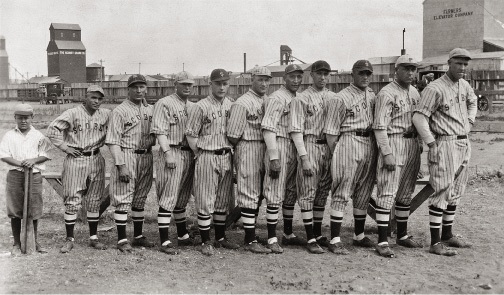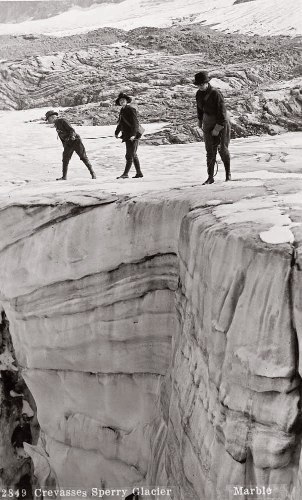Ellen Baumler's Blog, page 40
March 13, 2013
Little Cowboy Bar
Musty, gnarly, and eclectic would be a good way to describe the Little Cowboy Bar and Museum, a landmark along Fromberg’s West River Road which is the tiny town’s main street. If you duck into the low slung bar where brands cover the green stucco storefront, you’ll be amazed at the Montana history hidden inside.
 Courtesy Shannon Kaple, Center Avenue Imaging. Used by permission.Longtime owner Shirley Smith has collected a mixture of oddities, autographs, artifacts, and memorabilia spanning mor...
Courtesy Shannon Kaple, Center Avenue Imaging. Used by permission.Longtime owner Shirley Smith has collected a mixture of oddities, autographs, artifacts, and memorabilia spanning mor...
 Courtesy Shannon Kaple, Center Avenue Imaging. Used by permission.Longtime owner Shirley Smith has collected a mixture of oddities, autographs, artifacts, and memorabilia spanning mor...
Courtesy Shannon Kaple, Center Avenue Imaging. Used by permission.Longtime owner Shirley Smith has collected a mixture of oddities, autographs, artifacts, and memorabilia spanning mor...
Published on March 13, 2013 09:35
March 11, 2013
Josephine Doody
On the way to isolated Harrison Lake, in the wilderness area on the southern border of Glacier National Park, lie the ruins of a secret cabin. The area is extremely difficult to access because you have to cross the Middle Fork of the Flathead and there is only a short time when it’s not frozen or deep. The remote cabin was home to Josephine Doody, a woman even more notorious than Calamity Jane. And unlike calamity, the events of her life are not disputed. John Fraley, in his book Wild River P...
Published on March 11, 2013 09:36
March 8, 2013
Friday Photo: The Daily Grind
Happy Friday, history buffs!
 Montana Historical Society Photograph Archives, PAc 77-94In today's photo, bachelor Henry Syverud grinds coffee in his homestead shack in 1911.
Montana Historical Society Photograph Archives, PAc 77-94In today's photo, bachelor Henry Syverud grinds coffee in his homestead shack in 1911.
Bonus: Speaking of coffee, Viola Fowler shared this recipe of coffee fudge in the YWCA Cook Book published by Montana State College circa 1916. If you try it, let me know how it turns out:
Two cupfuls of white sugar; one-half cupful of strong coffee, one cupful of chopped nuts. Boil the sugar and coffee together without stir...
 Montana Historical Society Photograph Archives, PAc 77-94In today's photo, bachelor Henry Syverud grinds coffee in his homestead shack in 1911.
Montana Historical Society Photograph Archives, PAc 77-94In today's photo, bachelor Henry Syverud grinds coffee in his homestead shack in 1911. Bonus: Speaking of coffee, Viola Fowler shared this recipe of coffee fudge in the YWCA Cook Book published by Montana State College circa 1916. If you try it, let me know how it turns out:
Two cupfuls of white sugar; one-half cupful of strong coffee, one cupful of chopped nuts. Boil the sugar and coffee together without stir...
Published on March 08, 2013 10:02
March 6, 2013
Julia Tuell
Today at noon I'll be telling stories about women homesteaders and ranchers, including Julia Tuell. It's a fundraiser for the Friends of the Historical Society, so bring your lunch and $5.00 to the Historical Society and join us! By the way, I posted an event calendar if you want to see what else is coming up.
Montana’s Northern Cheyennes and the Sioux of South Dakota in the early twentieth century are the subjects of Julia Tuell’s little-known photographic legacy. Through her c...
Montana’s Northern Cheyennes and the Sioux of South Dakota in the early twentieth century are the subjects of Julia Tuell’s little-known photographic legacy. Through her c...
Published on March 06, 2013 09:24
March 4, 2013
Methodist Deaconesses
Happy Women's History Month! Today's post celebrates some particularly dedicated women.
The Deaconess Movement rose from within the Methodist, Lutheran, Episcopal, and other Protestant denominations. It sought to incorporate professional women in ministerial duties. The Chicago Training School was the center of the movement and prepared its deaconesses to serve as missionary nurses, teachers, and social workers. Unlike Catholic sisters, deaconesses took no perpetual vows, but if a woman chose...
The Deaconess Movement rose from within the Methodist, Lutheran, Episcopal, and other Protestant denominations. It sought to incorporate professional women in ministerial duties. The Chicago Training School was the center of the movement and prepared its deaconesses to serve as missionary nurses, teachers, and social workers. Unlike Catholic sisters, deaconesses took no perpetual vows, but if a woman chose...
Published on March 04, 2013 10:04
March 1, 2013
Friday Photo: Scobey's Baseball Team
 Montana Historical Society Photograph Archives, 950-885Here's a photo for all the baseball fans celebrating the start of spring training. Scobey's 1925 baseball team boasted an impressive 30-3 record. Left to right are batboy Charles Smith, Porky Dallas, Wally Hilden, Honey Guyer, Delno Cottingham, Happy Felsch, George Eastman, Joe Lupe, Johnny Meyers, Steve Mattick, and Swede Risberg.
Montana Historical Society Photograph Archives, 950-885Here's a photo for all the baseball fans celebrating the start of spring training. Scobey's 1925 baseball team boasted an impressive 30-3 record. Left to right are batboy Charles Smith, Porky Dallas, Wally Hilden, Honey Guyer, Delno Cottingham, Happy Felsch, George Eastman, Joe Lupe, Johnny Meyers, Steve Mattick, and Swede Risberg.
 Montana Historical Society Photograph Archives, 950-885Here's a photo for all the baseball fans celebrating the start of spring training. Scobey's 1925 baseball team boasted an impressive 30-3 record. Left to right are batboy Charles Smith, Porky Dallas, Wally Hilden, Honey Guyer, Delno Cottingham, Happy Felsch, George Eastman, Joe Lupe, Johnny Meyers, Steve Mattick, and Swede Risberg.
Montana Historical Society Photograph Archives, 950-885Here's a photo for all the baseball fans celebrating the start of spring training. Scobey's 1925 baseball team boasted an impressive 30-3 record. Left to right are batboy Charles Smith, Porky Dallas, Wally Hilden, Honey Guyer, Delno Cottingham, Happy Felsch, George Eastman, Joe Lupe, Johnny Meyers, Steve Mattick, and Swede Risberg.
Published on March 01, 2013 10:25
February 27, 2013
Annie Morgan
Legend has it that African American Annie Morgan was a cook for General George Armstrong Custer. After the Battle of the Little Bighorn, she was out of a job and eventually made her way to Philipsburg in Granite County. This part of the story has been disputed, and Annie’s past is uncertain. However, it is a fact that Granite County attorney David Durfee hired her to take his uncle—who had a severe drinking problem—to an abandoned fox farm on Upper Rock Creek to dry out. Annie cared for the u...
Published on February 27, 2013 10:01
February 25, 2013
Octavia Bridgewater
The Army Nurse Corps formed in 1901, and African American nurses served throughout all wars. However, they served as contract nurses and not in the military. At the end of World War I, when the Spanish flu epidemic caused a severe shortage of nurses, the Army Nurse Corps accepted eighteen African American women after Armistice to care for German prisoners of war and African American soldiers stateside. In 1941, the Army Nurse Corps began accepting a few African American nurses. In...
Published on February 25, 2013 10:21
February 22, 2013
Friday Photo: Sperry Glacier
Happy Friday! Do you have any adventures planned for the weekend?
 Montana Historical Society Photograph Archives, 956-638In today's photo, sightseers explore a crevasse in Sperry Glacier in Glacier National Park, circa 1910. Have you ever made the hike up to to the glacier? If you go, use more sense than these hikers and don't tie yourselves together!
Montana Historical Society Photograph Archives, 956-638In today's photo, sightseers explore a crevasse in Sperry Glacier in Glacier National Park, circa 1910. Have you ever made the hike up to to the glacier? If you go, use more sense than these hikers and don't tie yourselves together!
P.S. More vintage views of Glacier here and here.
 Montana Historical Society Photograph Archives, 956-638In today's photo, sightseers explore a crevasse in Sperry Glacier in Glacier National Park, circa 1910. Have you ever made the hike up to to the glacier? If you go, use more sense than these hikers and don't tie yourselves together!
Montana Historical Society Photograph Archives, 956-638In today's photo, sightseers explore a crevasse in Sperry Glacier in Glacier National Park, circa 1910. Have you ever made the hike up to to the glacier? If you go, use more sense than these hikers and don't tie yourselves together!P.S. More vintage views of Glacier here and here.
Published on February 22, 2013 09:59
February 20, 2013
J. L. Campbell’s Guide to Idaho
J. L. Campbell’s travel guide to the Territory of Idaho, Idaho: Six Months in the New Gold Regions, was intended to aid would-be emigrants contemplating a journey to the new gold fields. Campbell traveled the region in 1863, but by 1864 when his guide was published, it was already outdated. Montana Territory had been carved out of the vast chunk of Idaho. Campbell’s guide, however, was a useful tool because it described the route from Omaha, Nebraska, to the diggings at Bannack and Virgi...
Published on February 20, 2013 09:31



